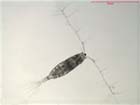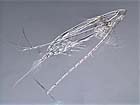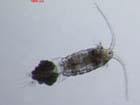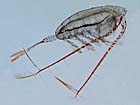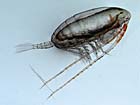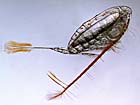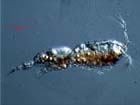Copepods
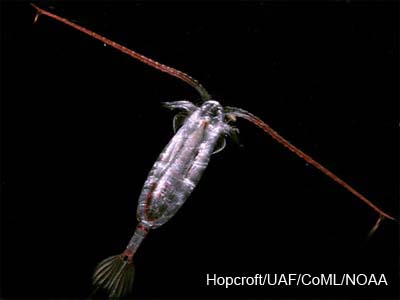
Copepod means “oar footed”. Within the water column, the copepods are the most numerous multi-cellular organisms, generally contributing about 80% of the animal mass in this community. They often referred to as the “insects of the sea”, because of their sheer numbers and similar role in food webs as insects have on land. They are the major food item for many other planktonic species, fish, sea-birds and even some great whales.
Copepods swim by using the 4 or 5 pairs of legs on their body along with the movement of their mouth parts. For rapid movement they will also use their tail. Many copepods are generalist feeders simply “filtering” the food (plant and single-celled animals) out of the water around them. Other species are voracious predators, while others eat primarily detrital material. There are also many parasitic forms that will not be considered here.
Like insects, copepods grow by casting off their old exoskeletons, going through a variety of stages (generally 12) after hatching. Like caterpillars, they have two major life forms, starting out as a nauplius, and then metamorphizing mid-life to the copepodite body form that is shown in most images. The adults of many species are longer lived, and either scatter their eggs in the water column or carry them until they hatch. The nauplius can be as small as 0.05 mm in length, while adults range from 0.3 to 2 cm in total length.
They can be found all the way from the surface to the bottom of the oceans, although most species have a specific range of depth over which they are found. Gulf of Alaska species live severeal months to more than 1 year.
Click on the thumbnails at left to see examples of the ~150 species of copepods known to exist in the subarctic.
Page Author: Russ Hopcroft
Updated: Jan 1, 2010

